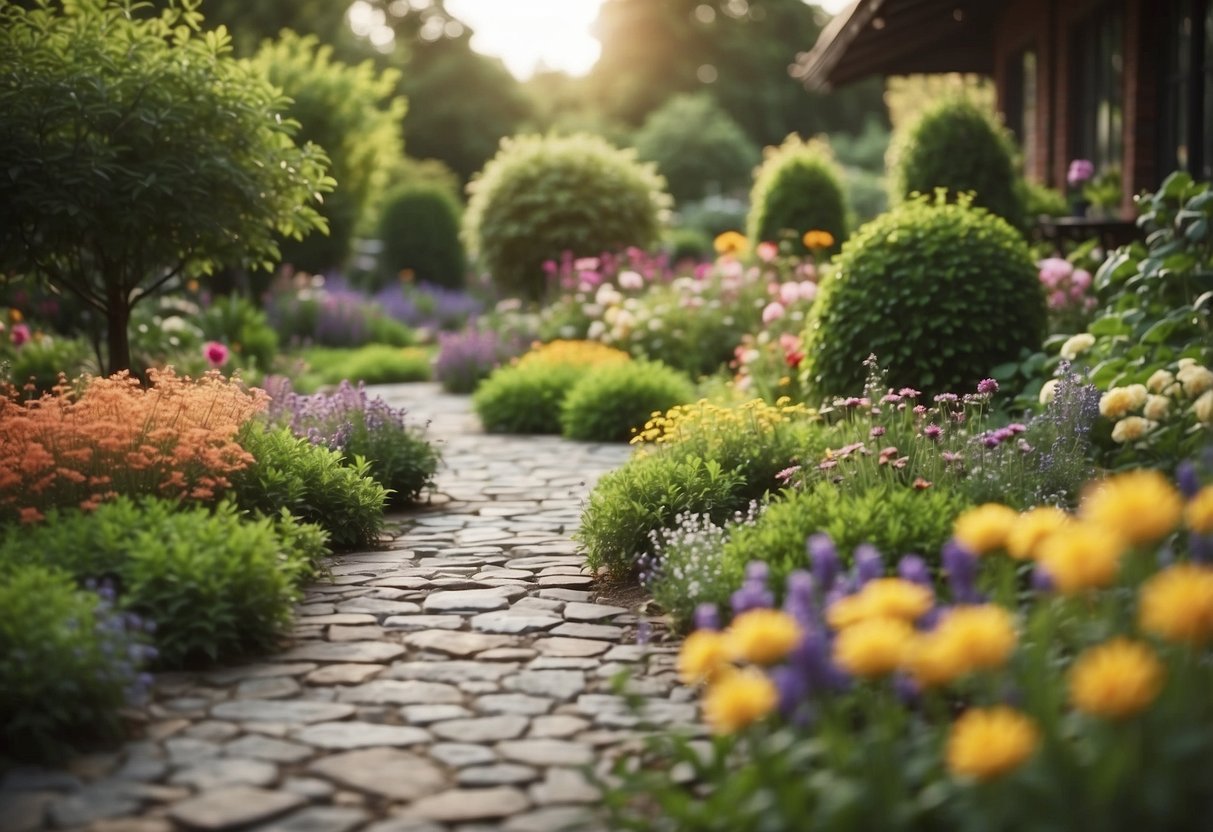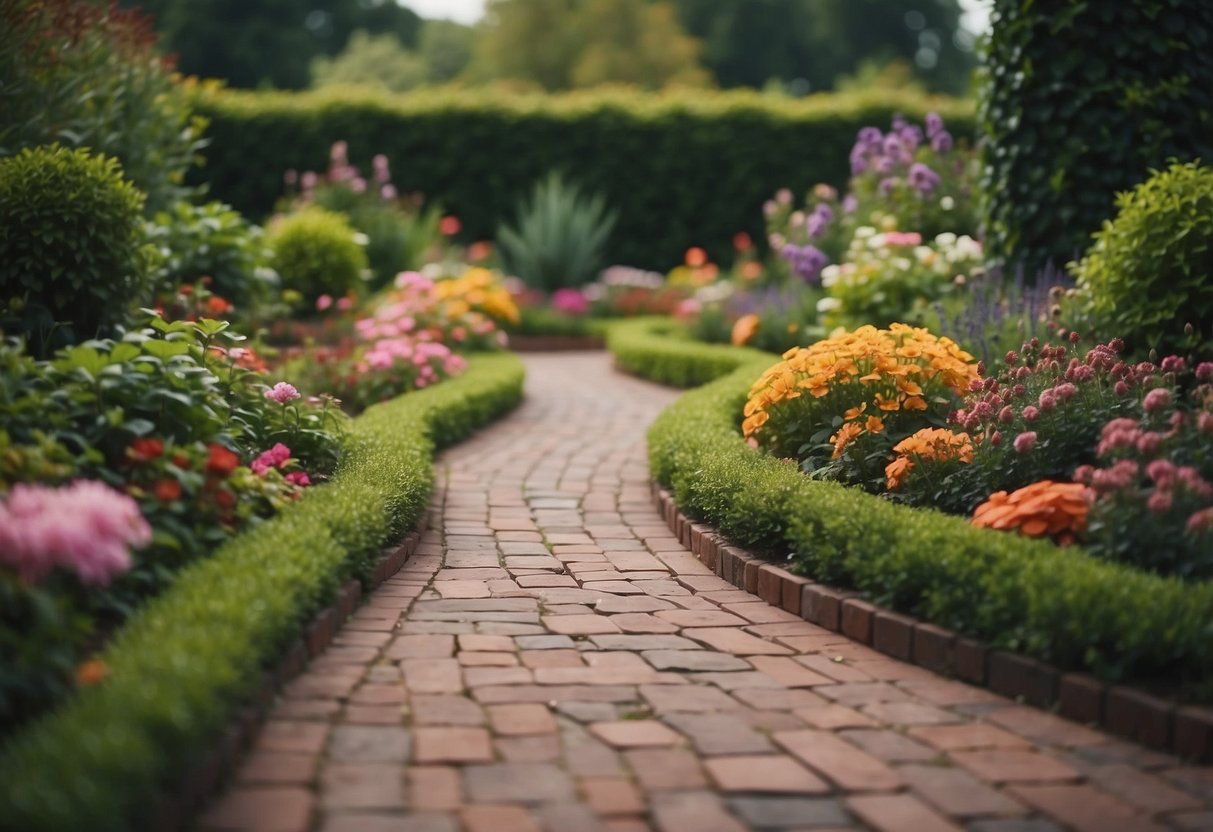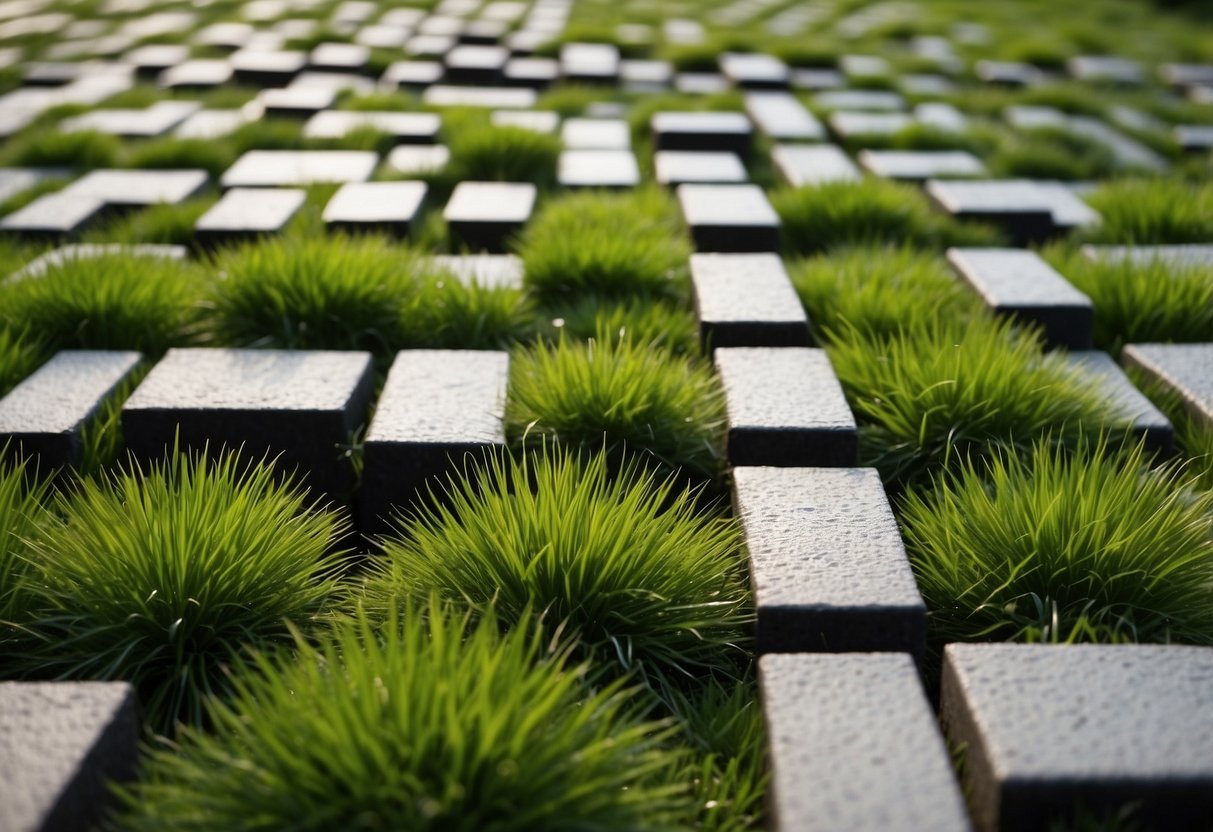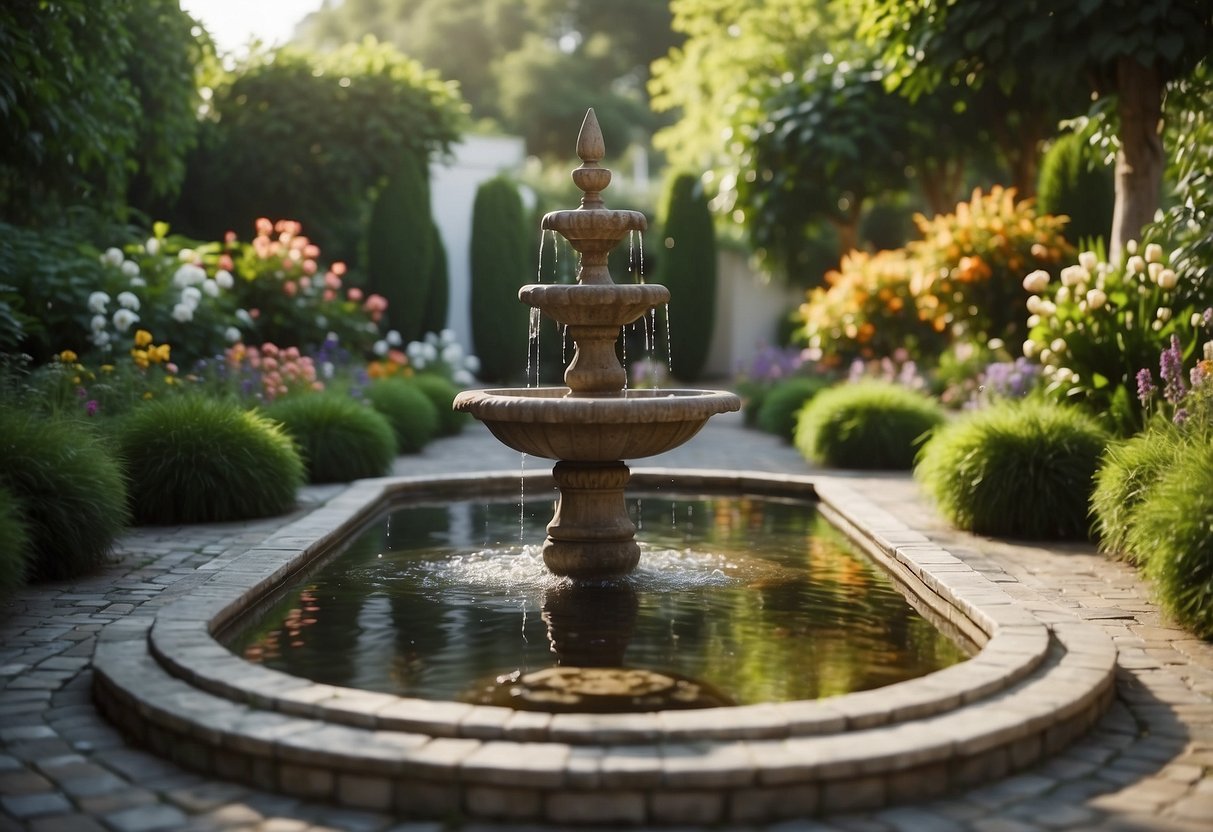Garden Flooring Ideas: Transform Your Outdoor Space
Choosing the right garden flooring can transform your outdoor space into a beautiful, functional area for relaxation and entertainment. With many options available, it can seem overwhelming to find the perfect match for your needs and style. By exploring different garden flooring ideas, you can create a space that’s both visually appealing and practical.

From simple gravel paths to elegant stone patios, there’s a solution for every budget and design preference. Considering factors such as maintenance, durability, and cost can help you make the best choice. Have fun experimenting with various materials and patterns to make your garden truly unique and inviting.
1) Interlocking Deck Tiles

Interlocking deck tiles are a great choice for easy and fast outdoor flooring. These tiles snap together without the need for tools, making installation a breeze. You can find them in materials like stone, rubber, and plastic.
These tiles are durable and can handle outdoor weather well. They are ideal for covering old decks or creating new patios. Learn more about options like natural stone tiles from Gardenista. This makes them perfect for DIY projects.
2) Gravel Garden Path

A gravel garden path can transform your backyard into a peaceful retreat. It’s easy to install and low maintenance. Gravel paths work well with various garden styles.
They are also durable and can last for years with proper care. Pair your path with a mix of flowers for a beautiful and functional space.
The gravel texture can be enhanced by adding rocks of different sizes. This adds definition and keeps the gravel in place. Also, adding edging can help maintain the path’s shape and keep your garden neat.
You can truly make it your own by choosing different gravel colors that match your garden’s aesthetics.
3) Stepping Stones

Stepping stones can add charm and function to your garden. They make it easy to get around while keeping your feet clean and dry.
Choose from various designs like irregularly-shaped stones that fit together like a puzzle. This can give your garden a more natural look.
Another idea is to use a rock base to prevent the stones from shifting. This helps water drain away and keeps everything in place.
Adding a perfect pebble border can further enhance the look. These small stones fill in gaps and create a neat edge.
4) Composite Decking

Composite decking is a great choice for garden flooring. It’s made from a mix of wood fibers and plastic, offering the look of wood without the upkeep.
Maintenance is minimal. You just need to clean it occasionally with soap and water.
It’s also durable and resists scratches, fading, and stains. Perfect for busy outdoor spaces.
Consider adding built-in deck lights for a stylish touch. For more inspiration, explore these composite deck ideas.
You can also stage an area for entertaining with hearty composite decking, as seen in these garden decking ideas.
5) Stamped Concrete

Stamped concrete is a great option for garden flooring. It combines the durability of concrete with the look of other materials.
You can choose from various textures and patterns to fit your style. Some popular patterns include Ashlar Cut Slate and Roman Slate.
Plus, stamped concrete is more affordable than many other options, making it a budget-friendly choice for your garden. For more ideas, check out these stamped concrete designs.
6) Rubber Pavers

Rubber pavers are a great choice for garden flooring. They are made from recycled materials and come in various colors and designs.
This type of flooring is very durable and can handle heavy foot traffic. Plus, it’s soft underfoot, making it comfortable to walk on.
Rubber pavers are also slip-resistant, which adds an extra layer of safety, especially when it’s wet. They’re perfect for families with kids. For more info, you can check out this guide on installing rubber pavers.
7) Bark Mulch Pathways

Bark mulch pathways are a great way to create a natural look in your garden. They are budget-friendly and DIY-friendly. Using bark mulch for garden paths is a simple but effective solution.
Mulch helps prevent weeds and retains moisture. To build a mulch path, first, lay down some cardboard to stop weed growth. Then spread the mulch evenly on top.
You may want to add edging to keep the mulch in place. Bark mulch pathways give your garden a rustic and cozy feel. For more ideas, check out these walkway designs.
8) Brick Pavers

Brick pavers are a classic choice for garden flooring. They add a timeless look and are very durable. You can create various patterns like herringbone or running bond for a unique design.
These pavers also come in different shades of red, brown, and even gray. They blend well with garden settings and add natural charm.
For more ideas, check out these inspiring brick patio designs. Another great resource is this collection of outdoor brick patio ideas.
9) Grass Pavers

Grass pavers are a great way to make your garden both green and strong. These pavers blend grass with structural support, making them perfect for any eco-friendly space.
You can use them for driveways, walkways, or patios. They allow water to seep into the ground, reducing runoff and promoting healthy soil.
Grass pavers look natural and can be installed easily. They help with drainage and give your garden a refreshing, green look. For more ideas, check out paver patio ideas.
10) Flagstone Patios

Flagstone patios are a beautiful addition to any garden. They come in various colors, shapes, and sizes, allowing you to create a custom look that fits your outdoor space.
The stones are heavy and need proper base preparation to ensure they stay level. This makes the project best for someone with some DIY experience or a willingness to hire professionals.
Costs can vary widely depending on the type of stone you choose and whether you do it yourself or hire someone. Typically, prices range from around $700 to $5000, including installation.
Understanding Garden Flooring

Choosing the right flooring for your garden can transform your outdoor space, making it both functional and aesthetically pleasing. Different materials offer unique advantages, from durability to ease of maintenance.
Types of Garden Flooring Materials
1. Marble: Marble is a sturdy and elegant choice for garden flooring. It can withstand a lot of wear and tear, making it ideal for areas with high foot traffic. Its natural beauty adds a touch of luxury to your garden.
2. Crushed Stone: Crushed stone provides a naturalistic design, great for fire pits. It offers a practical and safe option with its stable and porous surface.
3. Polished Concrete: Polished concrete is an excellent choice if you want low-maintenance flooring. It’s easy to clean and maintain, and it’s perfect for a sleek, modern look.
4. Gravel: Gravel is budget-friendly and easy to install. It works well for areas where you plan to place chairs and tables, providing a stable surface that drains well.
5. Shingle and Slabs: Combining shingle with paving slabs gives you the best of both worlds. It’s easy to walk on and adds a lovely contrast of textures to your garden.
Benefits of Different Materials
Marble: This material is not only beautiful but also highly durable. It can withstand various weather conditions without showing significant wear and tear. Marble’s cleanliness and classic appearance can elevate the look of your garden.
Crushed Stone: It offers excellent drainage properties, making it perfect for areas prone to wetness. It’s also low-maintenance and doesn’t require frequent upkeep.
Polished Concrete: One major benefit is its easy maintenance. It doesn’t get damaged easily and is simple to clean. Polished concrete also gives a contemporary look to your garden space.
Gravel: Gravel is one of the easiest materials to install and maintain. Its natural texture makes it visually appealing and practical. It’s also quite adaptable, suitable for various garden designs.
Shingle and Slabs: This combination offers a unique aesthetic. Shingle provides natural texture, while slabs ensure a flat, stable surface. Together, they are both practical and beautiful, perfect for any stylish garden.
Installation Tips

When installing garden flooring, it’s essential to prepare your garden properly. Deciding between DIY and professional installation can also impact the final result.
Preparing Your Garden
Before you start, clear the area of any debris, plants, or old materials. Make sure the surface is level to prevent uneven flooring. Use a spirit level to get accurate measurements. If you’re installing a permeable surface like gravel or shingle, lay down a weed barrier first. This will help stop weeds from growing through your new flooring.
Consider the soil type and drainage. Poor drainage can lead to water pooling, which can damage some types of flooring. You might need to add a layer of sand or gravel to improve drainage. This is especially important in wet climates.
If you’re using heavy materials like stone or concrete, ensure you have the right tools and enough help. These materials can be difficult to handle alone. Proper preparation can save you time and headaches later on.
DIY Vs Professional Installation
Deciding between installing your garden flooring yourself or hiring a professional depends on several factors. If you’re on a budget, DIY could save you money. Projects like pea gravel flooring or pallet wood can be done with basic tools and some patience.
Consider your skill level. More complicated installations, such as marble flooring, may require professional help. They often need precise cutting and laying, which can be challenging without experience.
Time is another factor. A professional team can usually complete the job faster. If you’re short on time or want a high-end finish, hiring pros can be worth the investment. Make sure to get multiple quotes and check reviews to find reliable contractors.
Maintaining Your Garden Floor

Taking care of your garden floor involves regular, seasonal maintenance and strategic long-term care. This helps keep it looking great and ensures its durability.
Seasonal Maintenance Tips
Spring: With the warmer weather, it’s a good time to clean up your garden floor. Sweep away any debris like leaves and twigs that may have gathered during winter. If you have pea gravel, rake it to redistribute.
Summer: During hot months, inspect your garden floor for any warping or damage caused by the sun. If you have wooden pallets, consider applying a UV-resistant sealant to protect from sun damage.
Fall: Sweep and remove any fallen leaves to prevent mold growth. For concrete floors, a quick pressure wash can remove dirt and prepare it for the winter months ahead.
Winter: During colder months, ensure there’s no water pooling on the floor. For surfaces like polished concrete, avoid using harsh salts for de-icing, as they can damage the finish.
Long-Term Care Strategies
Regular Cleaning: Keeping your garden floor clean extends its life. Sweep and wash it regularly. For concrete floors, a mild soap solution and water can be effective.
Resealing: If you have wooden or concrete floors, resealing them every few years can protect against water damage and stains. Resealing also helps maintain the appearance.
Repairs: Address minor damages promptly. Small cracks in concrete should be filled to prevent them from expanding. For aggregate concrete, ensure any loose pebbles are fixed to maintain the surface.
Inspection: At least once a year, do a thorough inspection. This helps identify issues like warping in wood or erosion in gravel that might need specific attention.
Taking these steps can keep your garden floor looking fantastic year-round and help it withstand various weather conditions. Regular care and timely repairs are key to a long-lasting garden floor.







